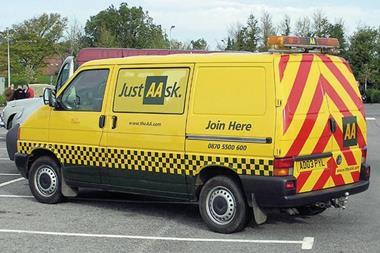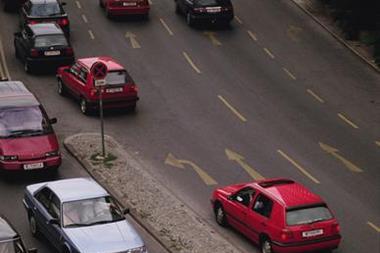All of the top private motor insurers made underwriting losses last year and, according to the latest EMB analysis, things are expected to get worse during 2009. Companies will have to adapt to new market conditions because they cannot rely on their reserves as in previous years, says Naeem Ali
For several years now, the UK motor market has managed to stay in profit only because it has released large amounts from reserves built up from previous years’ business. This practice has made it possible for otherwise loss-making companies to announce reasonably healthy figures. At some point, however, the pot was always going to start to run dry.
That moment of truth has finally arrived – and it has done so at the worst possible time, when investment income is virtually non-existent.
In addition, aggregators are making prices more visible to the public than ever before, so it has become more difficult to achieve increases and consequently the market has plunged into the red.
UK motor insurers are probably the most sophisticated in the world, but their market is also the most cut-throat and demanding. They have entered a difficult period that could be compared to the transition that followed the arrival of Direct Line in the 1980s. Just as Darwin said the most successful species are those that can adapt to a changed environment, so with the insurance industry today.
Numbers speak volumes
The annual analysis of the FSA motor returns always throws up exceptions – companies that have gone against the trend. Yet in 2008 only three of the largest motor insurers recorded underwriting profits, and they did so because of their commercial lines business. All the top 20 players lost money on their private motor portfolios.
The headline market figures paint a grim picture, as the combined ratio for UK motor deteriorated 3.4% to 105.5%, despite a slight improvement in loss ratios, which were down 0.4% to 85.1%. Intermediary-based insurers were particularly affected, with combined ratios increasing by about eight points between 2007 and 2008.
Even in buoyant investment conditions, these figures would mean that the industry as a whole was making poor returns. In today’s recessionary environment, they can only mean it is losing money. And there is worse to come, as the figures demonstrate (see box left).
Last year’s deterioration partly reflects increased expense ratios, up 1.1% to 30.3% as a result of fees paid to aggregators. Not only are aggregators taking more market share, but they are getting a higher proportion of motorists with low premiums, so the fixed fees they charge represent a higher percentage of the total.
Such considerations, however, are small compared to the drop in the amount of reserves available for release. In 2007 these reserves subsidised the market, not to mention the motorist, to the tune of £1.1bn. Last year, the amount available reduced to £880m, in effect adding 2.9% to the market’s combined ratio.
The reserves available for release are likely to go on diminishing, and some insurers may actually have to put in extra funds in response to personal injury developments. EMB estimates that the combined ratio could reach 111% this year – a level that is clearly unsustainable.
So what has happened to the much trumpeted increases in motor premiums, rightly reported by some commentators? Insurers are certainly well aware of the need to charge more, and they have been trying to do so. The short answer is that, although real, these rises are not what they seem because of how the internet has changed the dynamics of insurance buying.
An evolving market
The British are perhaps the world’s most demanding insurance buyers, with a culture of shopping around for the best price not evident in continental Europe, for example. The internet in general, and aggregators in particular, have given them the means to do so with very little effort. So, although a company’s premium rates may have risen by 10% on paper, the fast-selling policies will be the cheapest ones. Lines that allow for an element of profit will be less popular.
Some insurers are offering bargain deals through the aggregators, perhaps without realising it, and data shows that the public are only too happy to take advantage of them. The overall effect has been to erode any notional increases achieved, because the public are choosing disproportionately those products that are under-priced. In the meantime, direct insurers determined to keep hold of their remaining customers may well relax their conditions.
Just as there are pressures on the pricing side, credit hire organisations (CHOs) have added to loss costs and hence to loss ratios, offsetting improving accidental damage and theft claims experience. Indeed, the unanticipated effects of CHOs may result in claims experience deteriorating during 2007 and 2008, forcing companies to increase their reserves for those years.
Meanwhile, reinsurance premium rates have risen across the market. This has led to either higher net loss ratios or less stable underwriting results as many insurers respond by reducing their own cover. Since the market cannot continue like this, it is only natural to ask where it is all heading.
There are still some bright spots. Commercial motor remains profitable, just. This segment enabled four top-20 motor insurers to achieve combined ratios below 100% in 2008. The main reason for the superior performance is that commercial lines have seen significant prior-year reserve releases, not that the recent underwriting has been any more profitable.
Household insurance, meanwhile, continues to make a healthy surplus, although of course 2008 was a relatively benign weather year compared to the flood disasters of 2007. For many insurers, this profit stream is subsidising their motor underwriters and giving them breathing space whilst they make tough decisions.
So what now?
With its enhanced transparency, the internet has highlighted a challenge that is almost as old as insurance itself: how do you write profitably when there is a competitor willing to undercut the technical rate? Do you continue to tough it out, hoping that smaller or less well-reserved competitors drop out? Do you reallocate capital to other classes and reduce your presence in the motor market, or do you continue to fight for market share even if that means sustaining short-term losses? Or do you merge with a rival?
These circumstances demand that all insurers possess a clear strategy rooted in an accurate and detailed understanding of their markets, strong technical pricing and well-developed risk management frameworks.
They also demand that companies reassess all aspects of their operations to ensure that they are “best of class”. This will include the continued use of customer data to gain loyalty by understanding and catering to client buying needs, detection of potential fraud at both underwriting and claims stage, full and scientific exploitation of cross-selling and up-selling opportunities, and a proactive approach to claims settlement that reduces the impact of CHOs. Developing powerful brands so that price no longer trumps every consideration will also be key.
The best insurers will continue to innovate and adapt. There is a huge mountain to climb, but doing so would give insurers back some control over their destinies.
Hosted by comedian and actor Tom Allen, 34 Gold, 23 Silver and 22 Bronze awards were handed out across an amazing 34 categories recognising brilliance and innovation right across the breadth of UK general insurance.












































No comments yet